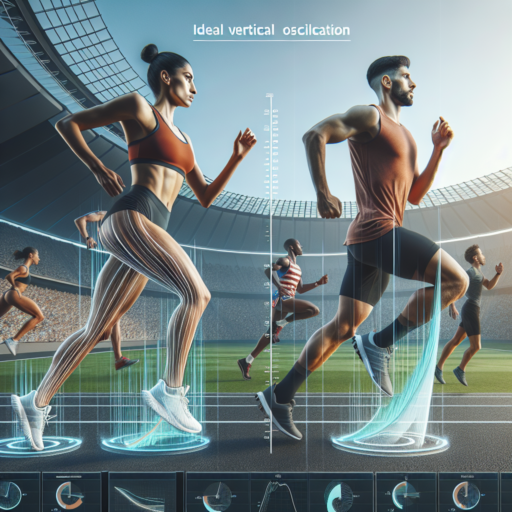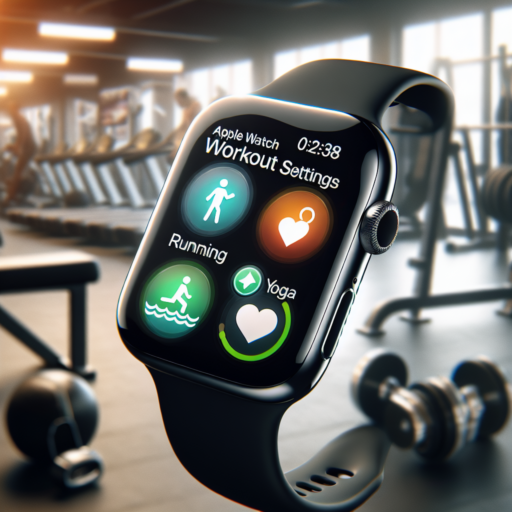What is ideal vertical oscillation?
Understanding the concept of ideal vertical oscillation is crucial for athletes, especially runners and triathletes, aiming to improve their performance and reduce injury risks. Vertical oscillation refers to the amount of ‘bounce’ or vertical movement a runner experiences as they stride. This metric, measured in centimeters, indicates the efficiency of a runner’s stride. Ideal vertical oscillation is closely related to running economy, with a lower bounce being more efficient.
Experts suggest that the ideal range for vertical oscillation lies between 6 to 13 centimeters. Runners within this range are considered to have a more energy-efficient stride, allowing them to conserve energy and potentially enhance their running endurance and speed. Achieving ideal vertical oscillation involves a combination of factors including stride length, cadence, and runner’s posture. It’s not merely about reducing vertical movement, but optimizing it for the individual’s body type and running style.
Focusing on improving one’s vertical oscillation can lead to noticeable enhancements in performance. Techniques such as strength training, particularly exercises that target the core and lower body, as well as practicing proper running form, can help in achieving an ideal oscillation. Furthermore, feedback from wearable technology can offer insights into a runner’s current performance, enabling targeted adjustments. Remember, the goal is to achieve a harmonious balance that suits one’s unique physiological and biomechanical characteristics.
What is a good vertical ratio percentage running?
Discussing vertical ratio (VR) in the context of running, it’s essential to understand its significance. VR measures the vertical oscillation of a runner divided by their stride length, represented as a percentage. This key metric illuminates the efficiency and biomechanics of a runner’s stride. But what numbers should runners aim for to optimize their performance?
Experts suggest that a good vertical ratio percentage falls generally between 7% to 10%. Achieving a VR within this range indicates that a runner maintains an effective balance between vertical movement and forward progression. Lower percentages, closer to 7%, are often seen in elite runners who maximize their forward momentum with minimal vertical energy waste. However, it’s crucial for individual runners to consider their unique biomechanics and running style.
To fine-tune your running efficiency and work towards an optimal VR, runners should focus on drills that enhance stride length and minimize excessive vertical movement. Simple adjustments, such as improving running posture and incorporating strength training, specifically targeting the core and lower body, can profoundly impact your vertical ratio. Remember, while aiming for a «good» VR percentage, personal comfort and injury prevention should always take precedence.
How to improve vertical oscillation when running?
Improving vertical oscillation while running is essential for enhancing efficiency and reducing the risk of injury. Vertical oscillation refers to the up-and-down movement during your run, and an optimal level can significantly influence your running performance. Focusing on this aspect can lead to a smoother, more efficient stride. Here, we’ll explore several strategies to help you minimize excessive vertical movement and improve your running technique.
Practice Proper Running Form
One of the key elements to reducing vertical oscillation is to practice and maintain proper running form. This involves aligning your body correctly, keeping your back straight, and ensuring that your head and shoulders are in a relaxed position. Concentrate on making shorter, quicker strides and landing softly on your feet. This not only decreases vertical movement but also enhances your overall running efficiency.
Incorporate Strength Training Exercises
Integrating strength training exercises into your routine can play a pivotal role in improving your vertical oscillation. Focus on building strength in your core and lower body muscles, including your glutes, quads, and calves. Efficient exercises include squats, lunges, and plyometric drills, which can help increase muscle power and endurance, allowing for a more controlled and powerful running stride.
Remember, improving vertical oscillation is not an overnight feat. It requires consistency in practicing good form, incorporating varied exercises into your training regimen, and perhaps even seeking feedback from running coaches or using technology to monitor and adjust your technique. By paying close attention to these aspects, you can enhance your running efficiency and enjoy a more effective and injury-free running experience.
What is the vertical ratio of running dynamics?
The vertical ratio (VR) of running dynamics is a critical metric for runners aiming to optimize their performance. It represents the ratio of vertical oscillation (the bounce in your step) to stride length, expressed as a percentage. This measurement provides insights into a runner’s efficiency and economy, making it a pivotal focus for both professional athletes and recreational runners alike.
Understanding your VR involves analyzing how much energy you expend vertically with each step compared to the distance you move forward. A lower vertical ratio is often indicative of more efficient running form, as it suggests that more energy is being directed horizontally, propelling the runner forward, rather than being wasted in upward motion. Therefore, by minimizing the vertical oscillation and focusing on forward propulsion, runners can potentially improve their speed and reduce the risk of injuries associated with inefficient running dynamics.
To accurately measure and evaluate the vertical ratio, runners rely on advanced wearables and running gadgets that track their stride lengths and vertical oscillation. This data allows for a precise calculation of the VR by dividing the vertical oscillation by stride length for each step and then converting this figure into a percentage. Improving this metric can be a game-changer for runners, highlighting the importance of incorporating specific drills and exercises aimed at enhancing running form and efficiency.





